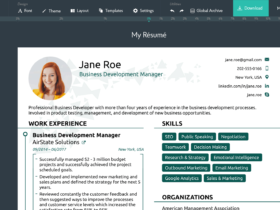Trying to do anything on a slow computer and continuing to comment on the go between programs and documents is very annoying and frustrating. But why do you have to carry it as long as you can fix it in easy steps? Stop living with your slow computer, you don’t need to go to a technical support center to fix it, and you don’t have to ask your group’s tech expert to come fix it for you (of course we all have that person in our group of close friends). There are already some things you can do for yourself.
Maybe after you follow these steps, you may end up repairing your computer’s slowness yourself, or you may learn one or two tips to avoid being slowed down. If that happens, don’t tell any of your friends, you might become the group’s technical expert afterwards.
In this article you will learn how to explore why your computer is slow using task management and how to limit the number of applications that work when you start the computer and talk about some of the repairs you can do.
 Make the task manager your best friend.
Make the task manager your best friend.
Think of a task manager as if it were a problem diagnostic device on your computer. This window gives you a look at how much software you occupy is the CPU burden, how much ram you’re holding, and how much network data you consume.
The easiest way to open Task Manager is by clicking the right cursor button on the taskbar start and from the drop-down menu click “Task Manager.”
The default shape of a task manager doesn’t show much information about the apps that are currently running, so after you open the app, click “More Details” in the bottom right corner.
By default, the list is divided into two sections, the first for applications and the second for operations in the background. The list of applications and tasks is constantly updated with the different columns constantly updating. Columns show how much each application or process is used in the background by processor or memory space, as well as network and graphical processor usage. Watch the task manager and see apps that go to the top of the list and disappear in a few seconds. Find processes that remain at the top of the list with high memory usage or CPU usage.
To close an app or process that you feel may be partly responsible for slow performance, click it and click the Finish icon.
Common reasons for computer slowness
There are a lot of applications and services that slow down the computer, but we can mention some of the potential culprits who are likely to be responsible for the computer’s slowness.
Ongoing searches of antivirus software
After watching how your computer works slowly through the open Task Management window, you may notice that your antivirus software is routinely located near the top of the list. Antivirus software can slow down your system while scanning your computer for malware and viruses.
Instead of allowing your antivirus software to search all the time for malware, you can schedule it to run a computer scan at times when you often don’t use your computer, for example at your nap time or while you’re working away from the computer.
 Lots of apps that work when you start your computer
Lots of apps that work when you start your computer
If your hgphs,f device takes time during the takeoff (operation), you probably have a lot of applications that start working when you start. You can edit the list of apps and services that start when you run when you sign in to your computer by opening Task Management and clicking the Startup Apps tab.
Go to the menu and remove anything you don’t need to download and set up as soon as you turn on your computer by clicking the app name followed by the opt-out button.
 Internet browser
Internet browser
Your internet browser can be the reason, especially if the number of windows and open tabs is high. Each window and tab consumes memory and processing power, and over time you’ll notice that your computer is slow.
You can view details of windows, extensions, and tabs that can be slowly blamed by the computer via Task Management by clicking the arrow next to your browser name. Instead, if you’re using Chrome, there’s a built-in task manager in it. Turn it on by clicking shift + Esc while using Chrome, or inside the browser click the menu button> More tools> Task Manager.
If you find that your browser often slows down your computer, we recommend using Firefox.
Some solutions you can try
Stop the screen effects from working.
Windows 10 has a lot of built-in special effects that negatively affect computer performance. To get rid of special effects, right-click the Start button and click “System.”
 Click advanced system settings to open a list of system properties. In the Advanced Options tab under Performance, click Settings.
Click advanced system settings to open a list of system properties. In the Advanced Options tab under Performance, click Settings.

The list of performance options will be opened. On the Visual Effects tab, choose either adjust for best performance to turn off all unnecessary animations and special effects, or choose custom and uncheck the visual effects you think you can use your computer without. When you’re done, click “OK” to apply the changes.
Clean the disc.
With this great tool you can improve computer performance and save space on your hard drive. This trusted Windows utility still helps clean up temporary files, installation files, and other unwanted waste. To turn it on, in the search box, look for “Disk Cleanup”, turn on the tool and click the “Clean system files” button.
 Other solutions
Other solutions
There is a wide range of ways available to solve and speed up computer slow and speeding problems. Here are some steps to take to speed up your slow computer:
Close the apps running when you’re done, and make sure they don’t work in the notification box (next to volume and Wi-Fi indicators). When some applications, such as Slack, close, they continue to work in the background.
- Pause to sync OneDrive. This is something even Microsoft considers that it can slow down your computer. You can pause OneDrive by clicking the OneDrive icon in the Notification Center Click More and then pause the sync.
- Check the available storage space and hard drive health. If your hard drive or Hard State drive runs out of space or becomes obsolete, that may be the reason. We recommend using an SSD.
- Turn off the computer. Not only do you restart it, but turn it off completely and then stay away for a few minutes. This gives your computer a chance to scan memory and start over the next time it runs.
That’s all, after all, if you find your computer still running slowly, simply reconfiguring the system, go to settings> Updates and backups> Restore the computer.







إترك رد